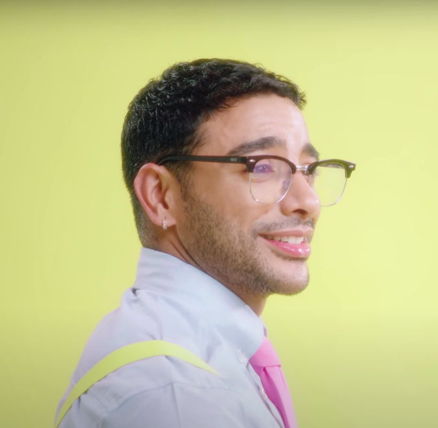|
presents THIS DAY IN GAY HISTORY based on: The White Crane Institute's 'Gay Wisdom', Gay Birthdays, Gay For Today, Famous GLBT, glbt-Gay Encylopedia, Today in Gay History, Wikipedia, and more …
Collected by Ted July 6 [{(o)}]|[{(o)}]|[{(o)}]|[{(o)}]| [{(o)}]|[{(o)}]
1602 – Jérôme Duquesnoy, Belgian sculptor, born (d.1654); Flemish artist Jérôme (Hieronymus) Duquesnoy was one of the most renowned sculptors of the 17th century, but for decades after his death he was better known for his conviction and execution on charges of sodomy than for his impish yet polished style of sculpture. Born into a Brussels family of artists at the beginning of the seventeenth century, Jérôme Duquesnoy lived his first twenty years in the shadow of his famous father, Jérôme Duquesnoy the Elder (who re-cast the famous Mannekin Pis [1619], the urinating boy that still stands as Brussels' signature fountain) and his brother François, who showed artistic promise at an early age. Like his brother he was trained in his father's studio. After a long stay in the service of Philip IV, he traveled to Florence in 1640 and a year later settled in Rome with his brother. On Francois's death in 1643, Jérôme returned to Brussels where he carved several statues of the apostles. He was at work on several projects at the cathedral of St. Bavon in Ghent, where his best sculptures were executed, when he was arrested for sodomy with two acolytes of the church who had served as his models. The brilliance of his work for the church notwithstanding, he was strangled then burned at the stake, a double death.
1750 – In France, Bruno Lenoir and Jean Diot, 18 and 20 years old, are caught having sex. They are strangled and burned in the Place de Greve by "seven wagons of brushwood, two hundred faggots (bundles of wood sticks), and straw." This is the last execution in France for consensual sodomy. In October, 2014, a memorial plaque was unveiled by Paris mayor Anne Hidalgo to remember them.
1900 – The American author Kathryn Hulme was born (d.1981). Best known for her novel The Nun's Story which was made into the award-winning 1959 movie starring Audrey Hepburn. Interestingly the book and film were based on Hulme's partner of more than 40 years, the Belgian nun Marie Louise Habets. We'd honor Habets on her birthday, but we don't know her date of birth. But what a fascinating story. Hulme's 1966 autobiography Undiscovered Country describes Hulme and Habets' first meeting in 1945. Both were volunteers with the United Nations Relief and Rehabilitation Administration (UNRRA) an international project working to resettle refugees displaced by World War II. Hulme recalls in her autobiography how, at a training camp in northern France, she became aware of a Belgian female colleague who spent most of her time asleep. Even when awake, the woman, a nurse, was taciturn, solitary and preoccupied, almost antisocial. In time, however, the Belgian nurse revealed herself as a diligent worker, a good friend, and a woman with a secret: she had just left a convent after 17 years of struggle with its holy rule. She felt burdened and depressed by a sense of having failed. The story of how Habets's story became Hulme's bestseller, and how the two women became partners, sharing a home and a life for nearly 40 years, is told in Zoe Fairbairns' article The Nun's True Story, and their parallel lives were explored in The Nun and the Crocodile: The Stories within The Nun's Story, a paper given by Debra Campbell at the Women and Religion section of the American Academy of Religion Annual Meeting on November 21, 2004. They lived openly as a couple and were acknowledged as such by friends and business associates. A handwritten note from Habets to Hulme dated 3 November 1975, begins "darling" and ends "I love you. Warmest kisses."
1907 – Bisexual Mexican artist Frida Kahlo has become not only an international icon for the power and intensity of her art, but also for the extraordinary suffering that she endured in life. Born in Mexico to a German photographer and his Mexican second wife, Kahlo became a central figure in revolutionary Mexican politics and twentieth-century art. In 1925, at the age of eighteen, Kahlo suffered appalling injuries in a streetcar accident, when she was impaled by an iron handrail smashing through her pelvis. Multiple fractures to her spine, foot, and pelvic bones meant that the rest of her life was dominated by a struggle against severe pain and disability. Following her accident Kahlo started painting, becoming an important surrealist. Her paintings, mostly self-portraits, employ the iconography of ancient Mesoamerican cultures to depict both her physical suffering and her passion for Mexican politics and for the love of her life, Diego Rivera, whom she married in 1929. A famous painter of heroic revolutionary murals, Rivera was much older than Kahlo and incapable of sexual fidelity. When he began an affair with her sister, Kahlo left Mexico. However, she forgave him this and other infidelities. She divorced Diego in 1940, but remarried him later the same year. Both artists had numerous affairs. Among Kahlo’s lovers were Leon Trotsky and other men, but they also included several women. Her friend Lucienne Bloch recalled Rivera saying, “You know that Frida is a homosexual, don’t you?” But the complexity of the artists’ marriage warns against taking this statement at face value. However, Kahlo’s gay significance is greater than her few lesbian liaisons suggest or even her representations of women, some of which are extremely sapphic. She was a master of cross-dressing, deliberately using male “drag” to project power and independence. A family photograph from 1926 shows her in full male attire. Frida Kahlo died on July 13, 1954, soon after turning 47. A few days before her death, she wrote in her diary:“I hope the exit is joyful — and I hope never to return — Frida”. The official cause of death was given as a pulmonary embolism, although some suspected that she died from an overdose that may or may not have been accidental. An autopsy was never performed.
1916 – Harold Norse, American poet, born (né Harold Rosen d.2009); An out gay American writer who created a body of work using the idiom of everyday language and images. One of the expatriate artists of the Beat Generation, he was widely published and anthologized. Norse was born in the Bronx, New York, and grew up in Brooklyn. He attended Brooklyn College, edited the school's literary magazine, the Brooklyn College Observer, and received his B.A. in English Literature in 1938. Memoirs of a Bastard Angel traces Norse's life and literary career with many of the most notable gay poets and writers of the 20th Century. With Carnivorous Saint: Gay Poems 1941-1976 Norse became a leading gay liberation poet. His collected poems, In the Hub of the Fiery Force, appeared in 2003. Norse was a two-time NEA grant recipient, and National Poetry Association award winner. Norse received a B.A. from Brooklyn College (1938) and an M.A. from New York University (1951). He moved to Paris in 1960, on a tip from William Carlos Williams, who rated Norse the 'best poet of [his] generation' and at the Beat Hotel he met Allen Ginsberg, Gregory Corso, William S. Burroughs, Brion Gysin, and others, drawn by their interest in Buddhist meditation, which Norse had recently taken up. Using the cut-up technique devised by Gysin and Burroughs, Norse wrote his experimental novel, Beat Hotel. Originally titled Sniffing Keyholes, the first chapter — which he describes as "a sex/dope scene between a muscular black youth called Melo and a blond Russian princess called Z.Z." — made even the often stoic Burroughs laugh. During his time at the Beat Hotel, Norse began creating his 'random paintings' or Cosmographs (using the hotel's bidet), which brought the attention of Paris' elite art scene. Norse's writing began receiving major critical attention during the mid-1960's. A 1966 edition of avant-garde literary journal Ole was devoted to him. Throughout the 1960's, Norse's work appeared in the Evergreen Review, a groundbreaking American literary journal that published the Beats alongside internationally acclaimed experimental writers Samuel Beckett, Günter Grass, and Octavio Paz. Norse returned to America in 1969 and became involved in the gay liberation movement, settling in San Francisco, where he died June 8th 2009.
1925 – The American television host and media mogul Merv Griffin born on this date also (d.2007). Griffin began his career as a radio and big band singer who went on to appear in movies and on Broadway. During the 1960s, Griffin hosted his own talk show, The Merv Griffin Show, and created the game shows Jeopardy! and Wheel of Fortune. Griffin was a bit of a basket case when it came to being open about his sexuality. He denied it at times and then poked fun at it. Two same-sex palimony and sexual harassment lawsuits in 1991 brought questions about Griffin's sexuality to national prominence. In 1991, Griffin was hit with both a $200 million palimony lawsuit by former "secretary/driver/horse-trainer/bodyguard," Brent Plott, and an $11.3 million sexual harassment lawsuit from Dance Fever host "Denny" Deney Terrio. A 2006 article in Rolling Stone magazine by John Colapinto stated: "Merv does not refute the underlying implication in both cases: that he is gay. Nor does he admit to it. Instead, he mentions the high-profile relationship that he began with actress Eva Gabor at the time of his legal troubles. They were photographed everywhere: Atlantic City, La Quinta, Hollywood premieres. Griffin says that they discussed marriage, and he parries any direct questions about his sexual orientation. 'You're asking an eighty-year-old man about his sexuality right now!', he cries. 'Get a life!'" But the year before he'd told the New York Times, "I tell everybody that I'm a quatre-sexual. I will do anything with anybody for a quarter." A tell-all book by Darwin Porter "Merv Griffin: A Life in the Closet" claims: "We met in '59 when he sang for my senior prom and the student committee paid him $500. What he made then was a far cry from the billionaire he was at the end." "He lost his virginity, to a female, that is, when Judy Garland seduced him. His first crush was Errol Flynn, whom he saw passed out naked on a couch. His roommate a year and a half was Montgomery Clift. He lived with Roddy McDowall here at the Dakota, where he introduced Eddie Fisher to Elizabeth Taylor. " "He maintained a virtual male harem and a pimp who supplied porn stars, but I don't go into his pay-for-gay guys. I keep it to his A-list dates like Rock Hudson, whom he met through Henry Wilson, Rock's agent, and who advised him to keep his sexuality quiet. And there was a young James Dean selling his sex for cash. Plus Judy Garland's 'Meet Me in St. Louis' boy next door, Tom Drake, who, by the way, ended up a used car salesman. There was Peter Lawford, Robert Walker, Gordon Scott the then-Tarzan. And lots about Merv's prolonged sexual tryst with Marlon Brando. There are his experiences at Liberace's all-male orgies." "His first encounter, a boyhood friend he grew up with, later tried writing a book about Merv. This being an era when male actors felt homosexuality was a danger to their career, lawyers shot down that book fast." "Friends who went to school with him in San Mateo say, when he was a young homosexual growing up, he was sexually molested by a priest." Griffin died August 12, 2007 and was buried in Westwood Memorial Park beneath a tombstone that reads: "I will NOT be right back after this message."
1943 – Born: Technical Sergeant Leonard Matlovich (d.1988), Vietnam War veteran, race relations instructor, and recipient of the Purple Heart and the Bronze Star. He fought the US military in 1975 for the right to serve as an openly gay man. Born in Savannah, Georgia, he was the only son of a career Air Force sergeant. He spent his childhood living on military bases, primarily throughout the southern United States. Matlovich and his sister were raised in the Roman Catholic Church. By his own admission, by the time he was in his late teens, he had become a 'white racist', and a 'flag-waving patriot'. Not long after he enlisted, the United States increased military action in Vietnam. Matlovich volunteered for service in Vietnam and served three tours of duty. He was seriously wounded when he stepped on a land mine in Da Nang. While stationed in Florida near Fort Walton Beach, he began frequenting gay bars in nearby Pensacola. He came out to his friends, but continued to conceal the fact from his commanding officer. Matlovich gradually came to believe that the discrimination faced by African Americans was similar to the persecution that homosexuals endured; it became a civil rights issue. When he was 30, Matlovich slept with another man for the first time. Unwilling to put his career on the line in the early 1970s, he would sometimes refer to himself as a 'minority' hinting at his new lifestyle. He taught race relations classes in the period of 1972-75. It was not until he was assigned to Langley AFB in 1975 that he felt confident enough to tell his military superiors that he was gay - forcing their response. After reading a letter authored by Matlovich that declared his homosexuality, his immediate superior officer asked, 'What does this mean?' Matlovich replied, 'It means Brown versus the Board of Education' - a reference to the 1954 landmark Supreme Court case outlawing racial segregation in public schools. For Matlovich, his test of the military's sexual orientation tolerance would be equivalent to that case. Despite his exemplary military record, tours of duty in Vietnam, and high performance evaluations, a military panel deemed Matlovich unfit for service and he was discharged from the Air Force six months after his declaration. He sued for reinstatement, but the legal process was a long one and by the time the case was resolved, his goals and objectives had changed. When a government attorney offered to permit Matlovich to return to Air Force duty provided he would sign a document pledging to 'never practice homosexuality again', Matlovich declined. Although he lost his initial bid to stay in the Air Force, a federal judge eventually ordered his reinstatement with retroactive back pay. In 1980, Matlovich agreed to settle the case without returning to the Air Force, but did win an upgraded honourable discharge and a cash settlement of $160,000. A converted Mormon and church elder when he lived in Hampton, Virginia, Matlovich found himself at odds with the Latter Day Saints and their conservative ideology and he was twice excommunicated by the LDS church for being homosexual. He was first excommunicated on October 7, 1975 in Norfolk, Virginia, and then again January 17, 1979 after his appearance on the Phil Donahue television show in 1978, without being rebaptised. Perhaps the most painful aspect of the whole experience for Matlovich was his revelation to his parents. He told his mother by telephone. She was so stunned she refused to tell Matlovich's father. Her first reaction was that God was punishing her for something she had done, even if her Roman Catholic faith would have not sanctioned that notion. Then, she imagined that her son had not prayed enough or had not seen enough psychiatrists. She later admitted that she had suspected the truth for a long time. When his father finally found out by reading it in the newspaper, Matlovich recalled, 'He cried for about two hours.' After that, he told his wife that, 'If he can take it, I can take it.' 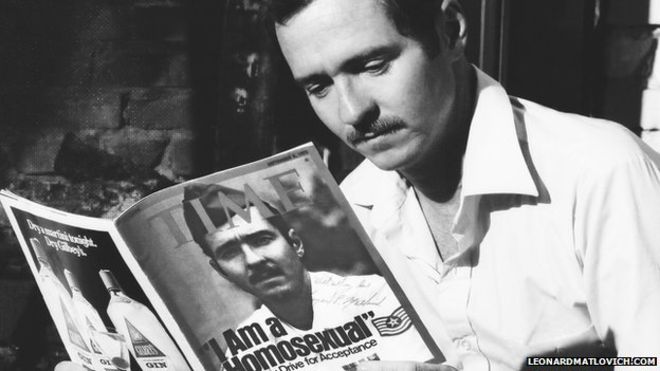 Matlovich reals the Time article about himself Once fully committed to openly gay civilian life, Matlovich moved to California ending up eventually in San Francisco, the centre of the gay community in the US, and became an outspoken advocate of gay rights. Matlovich, however, gradually became disenchanted with being the lighting rod for gay activist causes. His personal and financial situation had deteriorated between 1975 and 1980 and his inherently conservative, religious leanings were often at odds with the flamboyant leaders of the gay movement, both in San Francisco and nationwide. At one point he moved from San Francisco to the Russian River area of northern California where he used the proceeds of his settlement to open a pizza restaurant. While continuing to be active in gay causes, he became increasingly less visible in terms of a symbol of the gay movement. With the outbreak of HIV/AIDS in the US in the early 1980s, Leonard's personal life was caught up in the virus hysteria that peaked in the 1980s. In the northern California town of Guerneville, he was forced to close down his newly opened pizza parlor when his heterosexual friends and clientèle abandoned him out of fear and a lack of understanding about the propagation of the disease. He returned to San Francisco to sell used cars, and eventually ended up at a Ford dealership. During the summer of 1986, Matlovich felt fatigued, then contracted a prolonged chest cold he seemed unable to shake. When he finally saw a physician in September of that year, he was diagnosed with HIV/AIDS. Too weak to continue his work at the Ford dealership, he was among the first to receive AZT treatments, but his prognosis was not encouraging. He became a champion for HIV/AIDS research for the disease which was claiming tens of thousands of lives in the Bay Area and nationally. In 1987, he announced on Good Morning America that he had contracted the HIV virus . On June 22, 1988, just a month before his 45th birthday, Matlovich died of complications from HIV/AIDS. 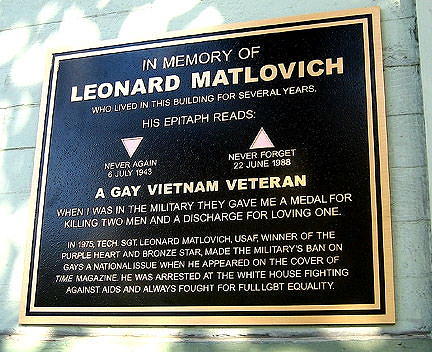 His tombstone reads: When I was in the military, they gave me a medal for killing two men and a discharge for loving one. Matlovich's tombstone is on the same row at Congressional Cemetery as J. Edgar Hoover's.
William Thorsell represents the very best in gay cultural stereotypes. He was the lead in his high-school play, president of student council and "got the highest marks in the province." Born July 6, 1945, he grew up mostly in Edmonton, where he studied at the University of Alberta and earned his Master of Arts degree from that institution in 1970. In 1975, he began his career in journalism at the Edmonton Journal, becoming an associate editor there in 1977. Before his journalism career began, and before he acknowledged his own homosexuality, Thorsell knew he was different. He was traumatized when he saw the classic 1970 gay film The Boys in the Band. "It was such a dark picture. It had every cliché type of gay person – the guy with all the sweaters, the aging gay and so forth – and the amount of neuroses in that film, coming out of every player and leading to this dreadful conclusion... You came out thinking, 'I can't be gay. I can't be going into that world.'"But the cork was about to pop. He would soon acknowledge his sexuality and come to see it as a gift. In 1975, Thorsell joined the Edmonton Journal's editorial board for approximately a year. After a brief term on the Globe and Mail's editorial board in Toronto, he returned to the Edmonton Journal in 1977 as an associate editor. Once he was comfortable with his sexuality, Thorsell hit the gay bars in Edmonton. The look back then, which Thorsell sported, consisted of white Ts, Levi's 501s and a moustache. "People used to say I looked like an RCMP officer in those days." In the late '70s Thorsell read Andrew Holleran's Dancer From the Dance and Larry Kramer's Faggots. He also read Toronto-based gay liberationist paper The Body Politic. But "in Edmonton, it wasn't a politically active community. It was just, 'Let's go dancing,' and we didn't cause ripples otherwise. You'd get The Body Politic and it was another world, a politically charged world that just did not happen [in Edmonton]." Years later, Thorsell would be talking about gay rights with a Canadian prime minister. Thorsell joined the editorial board of The Globe and Mail in 1984. By the end of that decade, he had been offered the position of editor-in-chief. He recalls, "When I was appointed I said to the publisher [Roy Megarry], 'You know I'm gay, and I'm not about to change my social world because I'm now an editor, so you have to understand that before I sign on.' And he said, 'I wouldn't expect that, and if you ever run into problems, just come see me.'" While running the Globe, Thorsell would sometimes stop on Church Street to enjoy a meal or a cold beer at Woody's, the noted gay bar. "The world of gay men to me is a very attractive world," he says. "I used to come out of the bars in Toronto and say to my straight women friends [that] it's one of the only rooms in the world where you go in and it's filled with men who all want to be liked by each other. It's a powerful common force." Thorsell wasn't much bothered by homophobia during his time at the Globe, though when he renamed the Food section "Cuisine," one staffer spouted, "Oh, cuisine, that's just gay for food." Having an out gay man as editor-in-chief of Canada's national newspaper had a positive effect on the coverage of queer issues. The trajectory of the gay rights movement in Canada – the speed at which legislative advances like same-sex marriage, as well as citizens' attitudes, have progressed – would likely have been different if the Globe had been conservative on gay issues. Thorsell recalls Prime Minister Brian Mulroney lobbying to have sexual orientation included in the Canadian Human Rights Act: "I certainly had discussions with Mulroney at the time [when] they were trying to get [the Act] to explicitly include gay people. It was when Kim Campbell was justice minister, and she couldn't get [the change] through the House. Mulroney got very impatient about that and said, 'How come she can't get it through the House? She's the justice minster.' And he supported her completely – he told me that on the phone at the time – and he was going to have to take it and jam it through himself, which he did. He was a pro-gay guy." In August 2000, Thorsell was appointed to the top management position at the Royal Ontario Museum, the fifth-largest museum in North America. William Thorsell has managed to get through life without his sexuality holding him back. When he was younger, there was "no taunting or anything like that. I didn't know that I was gay at that age, but I was. I think there was a period there, before the kind of social or legal acceptance that we all have [now], when it was a little bit thrilling when you finally got used to the idea that you were gay."
1950 – Joe Acanfora, born in Jersey City, New Jersey, is an American educator and activist. After graduating as valedictorian of his class from Brick Township High School, in Brick, New Jersey, Acanfora entered The Pennsylvania State University in 1968, and majored in secondary education. In his junior year, he joined, and soon thereafter became Treasurer of the Homophiles of Penn State (HOPS), a newly formed campus organization dedicated to protecting the civil and constitutional rights of homosexuals and increasing public understanding of homosexuality. When the University refused to grant official recognition to the organization, four of its members, including Acanfora, instituted legal action to compel such recognition. That action, which ultimately was successful, received considerable local publicity, in the course of which Acanfora acknowledged that he was a homosexual. In the following years, Acanfora, now openly gay, fought to become an earth science teacher in the public schools in Pennsylvania and Maryland in the early 1970s. His fight between 1971 and 1974 over a series of transfers and dismissals by authorities from his public school teaching assignments based upon his acknowledged homosexuality involved litigation through the federal court system; expert witness court testimony on the effect of an openly gay teacher on his students; extensive media coverage, including an appearance on CBS 60 Minutes; a 'morality investigation' by the Penn State University Teacher Certification Council; and active participation of his parents in the public debate.
1954 – Joachim Schulte is a German teacher and civil rights activist. Schulte comes from North Rhine-Westphalia and taught at the Albert Einstein School in Schwalbach in the Main-Taunus district until 2019. He has been active in the gay movement since 1978. In 1979 he took part in the third Russell Tribunal of the New Left and was involved in the organization of the homosexual meeting in Frankfurt am Main, the Homolulu Congress. In 1979 he co-organized one of the first two Christopher Street Days in Germany in Bremen . In 1982 he was both a founding member of the Bremen “Rat-und-Tat-Zentrum” and co-initiator of the Akademie Waldschlösschen conference center, where he sits on the board of trustees today. He was also a long-standing member of the board of directors of the lesbian-gay communication and cultural center in Mainz. With the founding of the QueerNet Rhineland-Palatinate network in 2005, he assumed the role of spokesman. In November 2012 Schulte received the Federal Cross of Merit ribbon. Joachim Schulte is also a member of the working group for gay teachers of the Education and Science Union (GEW) Rhineland-Palatinate and the Lesbian and Gay Association of Rhineland-Palatinate. Schulte is a member of the working group for the establishment of a central memorial for all Nazi victims in Mainz.
1966 – Glenn Scarpelli is an American former child actor and singer. He is perhaps best known for his role as Alex Handris from 1980 to 1983 on the sitcom One Day at a Time. Born in Staten Island, New York City, New York, he is the son of long time Archie Comics artist Henry Scarpelli. (Glenn would be featured in issue #330 of Archie, dated July 1984). He attended a private Catholic school, St. Joseph Hill Academy, from kindergarten to 8th grade. In 1977, at the age of 10, Scarpelli made his Broadway debut, appearing in the play Golda with Anne Bancroft. He returned to the stage in 1979 with the role of Richard, Duke of York in the Broadway revival of Richard III starring Al Pacino. Scarpelli's role as Alex Handris (1980–83) on the long-running television situation comedy One Day at a Time is his most prominent. He left that sitcom to appear in the NBC sitcom Jennifer Slept Here. Other television appearances include 3-2-1 Contact, Steven Spielberg's Amazing Stories, MacGyver and The Love Boat. He was also a co-host in summer 1983 of the NBC game show/human interest show Fantasy. He released a self-titled pop album in 1983, which included the single "Get a Love On". Scarpelli came out as gay in adulthood. He resides in Sedona, Arizona, where he and his then-partner Jude Belanger established the Sedona Now Network, a community television station, in 2003. Scarpelli and Belanger were married in California in 2008, but filed for divorce in 2012. 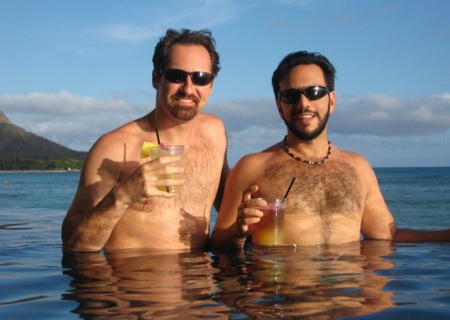 Scarpelli (R) and Belanger in Bali He has remained close friends with One Day at a Time co-stars Mackenzie Phillips and with Bonnie Franklin until her death in 2013.
1981 – Randy Rainbow is an American comedian and singer, best known for videos published on YouTube, in which he spoofs interviews with famous figures and parodies musical numbers with a political focus. Rainbow credits his grandmother as his greatest comedic influence. In a 2017 interview with The New York Times, he recalled "It was really my grandmother who was the biggest influence because she’d talk back to the celebrities and politicians on TV. She was a combination of Joan Rivers, Elaine Stritch, Betty White, and Bea Arthur rolled into one." After dropping out of community college in his early 20s, Rainbow moved back to New York to pursue a theatrical career. It was then he began blogging and making comedic videos. In August 2020, critics of Randy Rainbow circulated a collection of about 60 tweets posted between 2010 and 2016 on social media, highlighting his history of transphobic and racist statements. Rainbow apologized on August 20 in an interview with The Advocate. Rainbow is openly gay and Jewish. He was born on Long Island, lived in Queens for 17 years and has been residing in Manhattan since July 2019. He has also lived in Florida, where he attended school, including community college. He has a boyfriend named Lou Phillips.
1989 – Laith Ashley De La Cruz is an American model, actor, activist, singer-songwriter and entertainer of Dominican descent. He is a trans man. Laith grew up in a Dominican American household in Harlem, New York. He practiced individual and team sports and by age 9 was already into boxing, baseball and particularly basketball, his preferred sport. He continued playing sports into high school, including competitively, sometimes on the boys' team. He was named the top athlete amongst both boys and girls by the school's athletic director. Laith was raised in a church-oriented family, his father being Roman Catholic and his mother Pentecostal Christian which influenced some of the attitudes held by family during his coming out. First, Laith came out as homosexual when he was 17 years old, although he never called himself a lesbian. He explained, "Being assigned female at birth, I thought I was a lesbian, even though I hated the word.” Later, at age 19, he realized that he was transgender after watching videos produced by transgender people on YouTube. This prompted him to come out as a transgender man in 2013. Laith began medically transitioning in January 2014 with masculinizing hormone therapy. His voice deepened and he quickly grew a beard. Nine months later, he had a double mastectomy. and adopted the name Laith (meaning "lion" in Arabic) having admired the works of Laith Hakeem. Soon after, in 2015, Laith organized a photo shoot with a friend, and he posted the images on Instagram. The images caused viral attention, and many people posted negative comments. He was on the verge of deleting his Instagram account due to the negative comments, but Laverne Cox then reposted his images on her account. This helped inspire him to continue his online presence. Since that time, Laith has modeled for a variety of venues and campaigns, including Barneys (photographed by Bruce Weber), in Calvin Klein and in Diesel (shot by David LaChapelle) becoming the first-ever transgender man to be featured in a Diesel campaign. Laith Ashley has also appeared on the covers of renowned fashion and lifestyle publications including in British GQ, Vogue France, Out Magazine, Elle UK, Attitude UK Gay Times, FTM Magazine and Cassius, amongst others. In addition, Laith has done musical and television work. In 2016, Laith appeared in Strut, a television program about transgender models, which was produced by Whoopi Goldberg. In June 2018, Ashley performed his music, including his single "Can't Wait" at L.A. Pride. Laith Ashley is an activist particularly in transgender issues. He worked with FLUX, a division of the AIDS Healthcare Foundation, which is dedicated to raising awareness and providing support to trans and gender-nonconforming people, actively takes part in Pride parades, and has talked on numerous occasions of the dangers of transphobia and visibility of ethnic minorities.
2007 – In Hungary, Gábor Szetey, a Hungarian former politician and former Secretary of State for Human Resources in the Gyurcsány government publicly declares that he's gay at the opening night of the Budapest LGBT film festival, making him the first out LGBT person in Hungarian government. He currently lives in Spain.
TODAY'S GAY WISDOM I Am Not A Man - by Harold Norse I am not a man. I can't earn a living, buy new things for my family. I have acne and a small peter I am not a man. I don't like football, boxing and cars. I like to express my feelings. I even like to put my arm around my friend's shoulder. I am not a man. I won't play the role assigned to me - the role created by Madison Avenue, Playboy, Hollywood and Oliver Cromwell. Television does not dictate my behavior. I am not a man. Once when I shot a squirrel I swore that I would never kill again. I gave up meat. The sight of blood makes me sick. I like flowers. I am not a man. I went to prison for resisting the draft. I do not fight when real men beat me up and call me queer. I dislike violence I am not a man. I have never raped a woman. I don't hate blacks. I don't get emotional when the flag is waved. I do not think I should love America or leave it. I think I should laugh at it. I am not a man. I have never had the clap. I am not a man. Playboy is not my favorite magazine. I am not a man. I cry when I'm unhappy. I am not a man. I do not feel superior to women. I am not a man. I don't wear a jockstrap. I am not a man. I write poetry. I am not a man. I meditate on Peace and Love. I am not a man. I don't want to destroy you.
|
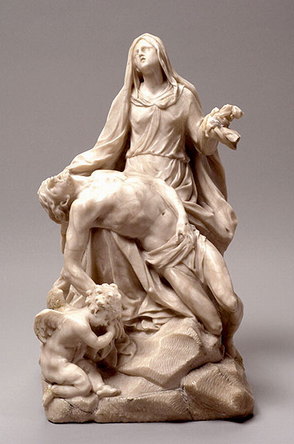
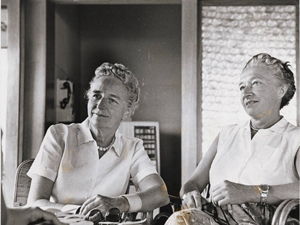

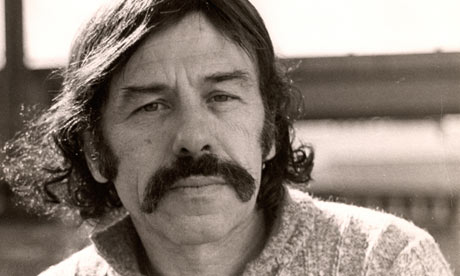
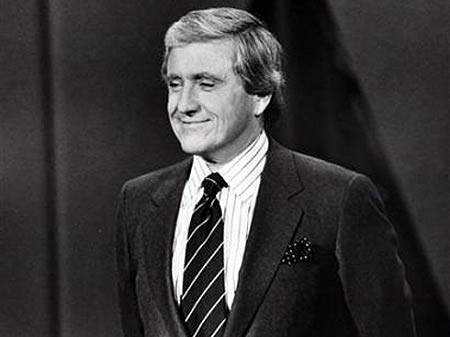
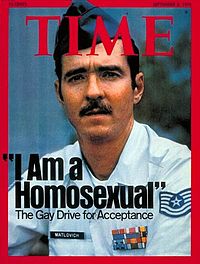
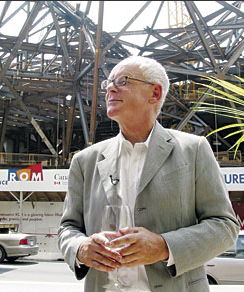
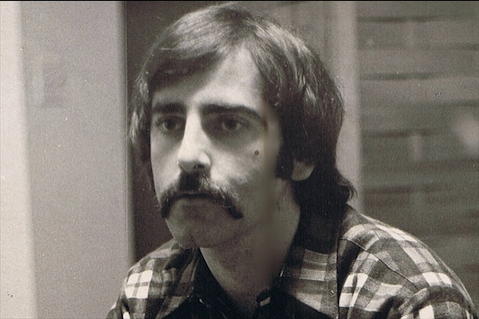
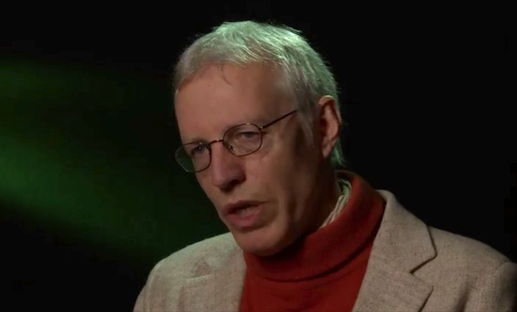
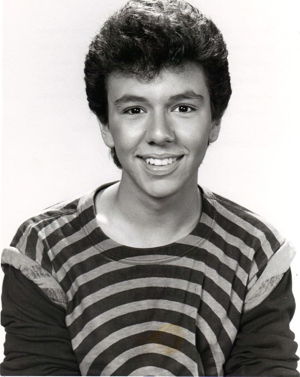

 Added 2023
Added 2023